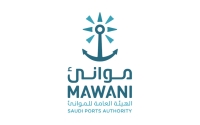
Ras Tannurah Port is the largest Saudi oil port in the world, handling approximately 90 percent of the hydrocarbon materials exported from the Kingdom of Saudi Arabia to global markets. The port is located north of Dammam City , situated on the Arabian Gulf coast. Features of Ras Tannurah Port Ras Tannurah Port operates with a capacity to accommodate over two thousand large oil tankers annually. It handles the shipment of no less than nine million bbl of hydrocarbon materials daily and unloads ...
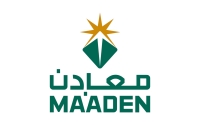
Mica in the Kingdom of Saudi Arabia is one of the industrial non-metallic minerals discovered within the extensive sedimentary formations of the Kingdom. Geological setting of mica mineral Mica is a group of complex phyllosilicate or sheet silicate minerals, chemically composed of potassium, sodium, calcium, magnesium, iron, lithium, and aluminum silicates. It is characterized by its ability to easily split into extremely thin sheets, making it industrially viable for electrical insulation in e...
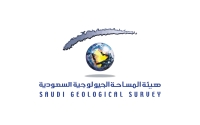
The National Geological Database Initiative is an initiative aimed at forming a comprehensive database focused on geology. This database includes information on geological surveys, exploration, mineral resources, and natural resources in the Kingdom of Saudi Arabia . It is intended to attract investors and support the industry. The initiative was launched in 2019 by the Saudi Geological Survey as part of the National Industrial Development and Logistics Program (NIDLP). Objectives of the Nation...
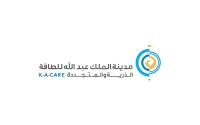
The Renewable Resource Atlas is a project launched by King Abdullah City for Atomic and Renewable Energy (K.A.CARE) in December 2013. The project aims to create a database that can be utilized when executing renewable energy projects for power production and water desalination. It is a national project to measure renewable energy resources across the Kingdom of Saudi Arabia; namely: solar energy, wind energy, energy-from-waste, and geothermal energy. Renewable Resource Atlas activities The Rene...
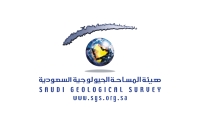
Quartz Stone in the Kingdom of Saudi Arabia is one of the semi-precious stones available in the Kingdom. Its chemical composition is silicon dioxide (SiO2), and it has no color. It has a hardness level of seven, a specific density of 2065, a refractive index of 1.544-1.553, and a density of 2.65 g/cm. One of its characteristics is that it scratches glass. The reason for quartz naming Quartz derived its name from a German word meaning 'very white.' It belongs to the hexagonal (trigonal...
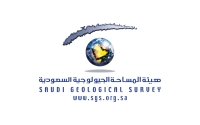
Beryl Stone in the Kingdom of Saudi Arabia is a precious stone found in six sites across the Kingdom. It belongs to the mineral family of emeralds and aquamarine, within the group of aluminum and beryllium silicates. Its chemical composition is aluminum and beryllium silicate, and it is green in color, following the hexagonal crystal system. Characteristics of beryl stone Beryl stone crystals are grooved and rough, or prismatic, with a glassy luster. It naturally occurs in pegmatitic granite an...
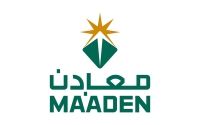
Talc in the Kingdom of Saudi Arabia is one of the minerals discovered in the Kingdom. It is highly soft, with a smooth, soapy texture, and has a pearly luster, ranging in color from white to gray to light green. When in a massive form, talc is referred to as soapstone, while high-purity talc is known as steatite. Its locations in the Kingdom are concentrated in: Wadi Kamal near Yanbu al-Bahr, Wadi Marikhat in Ummlujj, al-Amar area southwest of Riyadh, Jabal Farasan northeast of Jeddah, Jabal Ma...
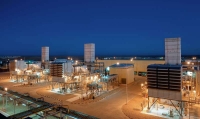
The Kingdom of Saudi Arabia's annual production of phosphate and its products is approximately six million t per year according to 2020 statistics. The Kingdom aims to reach nine million t annually by 2025, and its reserve stock amounts to about 2.7 billion t. Phosphate is a natural resource, and Northern Borders Province is the richest area in the Kingdom in terms of phosphate quantities, containing about 7 percent of the world's phosphate reserves. Phosphate plays a fundamental prod...
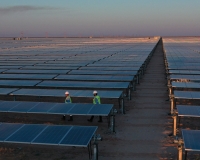
Jeddah Solar Power Project is a renewable energy project that relies on solar power. It is located fifty km southeast of Jeddah City in Makkah al-Mukarramah Province, Kingdom of Saudi Arabia . The project was launched in 2019 and has a total capacity of three hundred MW. Objectives of the project Jeddah Solar Power Project aims to increase the contribution of renewable energy sources to the energy mix with a total capacity of three hundred MW, help reduce the consumption of liquid fuels, and me...

The Electricity Interconnection Project with Iraq is an initiative by the Kingdom of Saudi Arabia to connect the electricity interconnection network of the Gulf Cooperation Council (GCC) countries to the south of the Republic of Iraq. The project was initiated with funding from the Saudi Fund for Development (SFD) and its implementation contract was signed between the GCC Interconnection Authority (GCCIA) and the Iraqi Ministry of Electricity in 2022, on the sidelines of the Jeddah Security and...
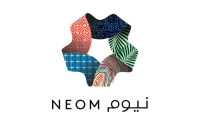
Yes, the Kingdom of Saudi Arabia produces green hydrogen, which is a form of renewable energy utilized as a fuel source for transportation modes and power stations and as a green feedstock in various manufacturing industries. The Kingdom hastened to produce green hydrogen through its global project for the future, NEOM. In 2020, it announced a partnership of USD5 billion to build a hydrogen production facility in NEOM, the NEOM Green Hydrogen Company (NGHC) . NGHC is constructing the world'...
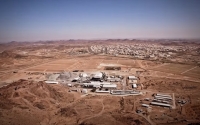
The oldest mine in the Kingdom of Saudi Arabia is Mahd adh-Dhahab Mine , the country’s first gold mine, located in Mahd adh-Dhahab Governorate , about 167 km south of al-Madinah al-Munawwarah . The history of the Mahd adh-Dhahab Mine dates back thousands of years, making it an archaeological and historical site, with carbon dating estimates suggesting that some of its parts are over two thousand years old. In 1939, the Founding King Abdulaziz Bin Abdulrahman Al Saud order...